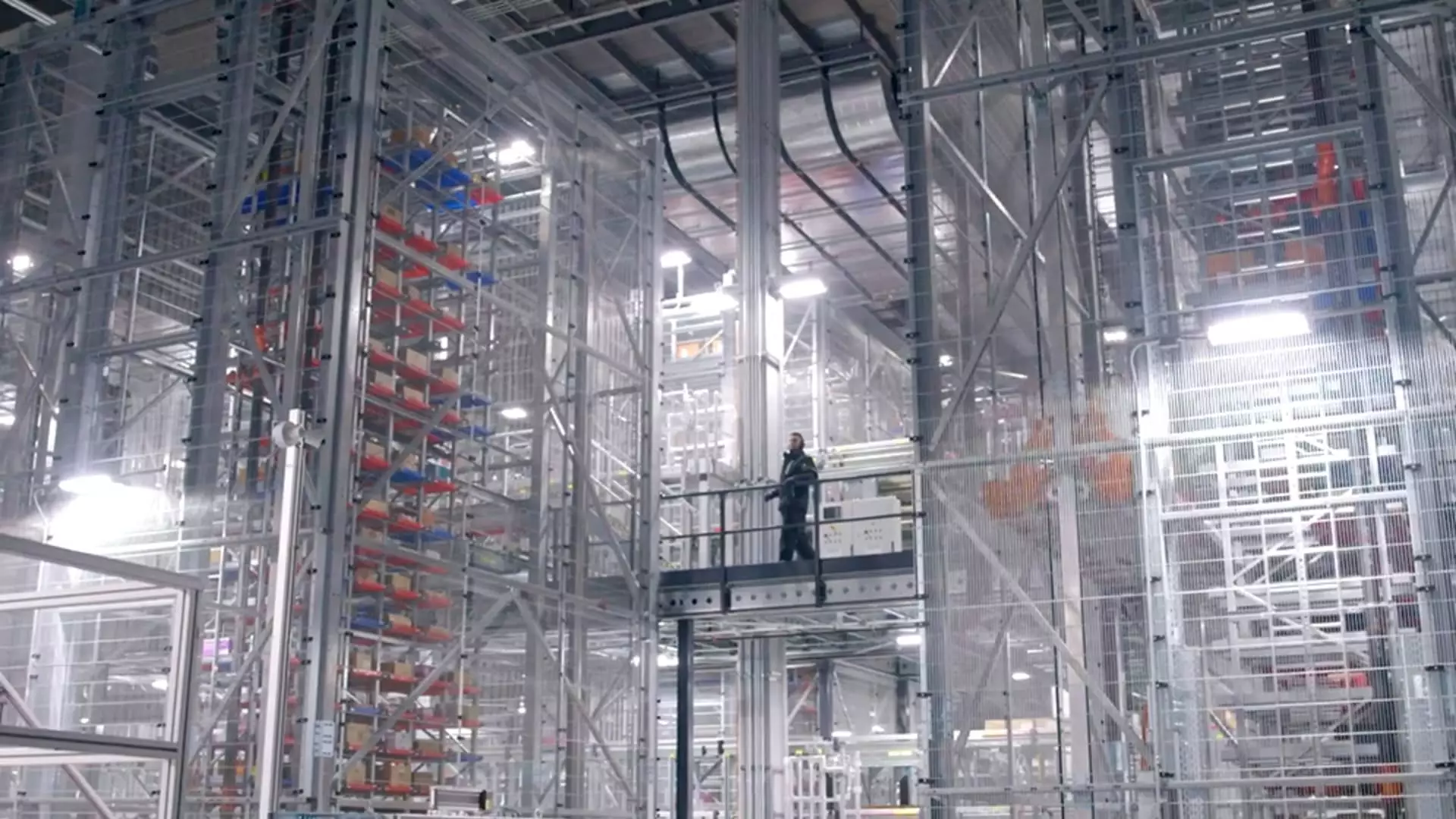Walmart recently announced plans to open five automated distribution centers for fresh food in an effort to enhance efficiency and improve its online grocery business, as reported by CNBC. The retail giant’s decision to invest in these new facilities highlights its commitment to keeping up with the evolving needs of consumers who are increasingly opting for store pickup or home delivery of groceries. By incorporating automation in the chilled and frozen areas, Walmart aims to streamline the storage and retrieval process of perishable items, ultimately leading to faster delivery to stores and customers.
The move towards automated distribution centers allows Walmart to gain a more precise understanding of its inventory in near real time. Dave Guggina, executive vice president of Walmart’s supply chain, emphasized the importance of this enhanced visibility, stating that it significantly improves the company’s ability to manage inventory compared to traditional manual processes. The high-tech facilities not only provide a more accurate picture of inventory but also enable Walmart to better predict demand and reduce unnecessary expenditures on safety stock, thereby operating more cost-effectively.
Increased Capacity and Efficiency
One of the key advantages of automating distribution centers is the ability to increase storage capacity and processing volume. According to Guggina, the new facilities can store twice the amount of products and process more than two times the volume of a traditional site. This increased efficiency contributes to higher spending at Walmart, with the company expecting capital expenditures to rise in order to fund the expansion of automation and store remodels.
Looking ahead, Walmart is set to automate two-thirds of its stores and a significant portion of its fulfillment centers by early 2026. This transition is expected to improve unit cost averages by around 20%. However, the automation of distribution centers for groceries could lead to changes in the workforce, potentially reducing jobs at some facilities. Guggina reassured that Walmart aims to maintain its overall number of employees while increasing productivity, though the roles required may shift. For instance, there may be a lesser need for manual labor on the warehouse floor, with an increased demand for truck drivers in the company’s fleet.
Walmart’s decision to invest in automated distribution centers for fresh food reflects its commitment to modernizing its supply chain and catering to the changing preferences of consumers. While the implementation of automation brings about increased efficiency, improved inventory management, and enhanced storage capacity, it also poses challenges in terms of workforce changes and potential job displacement. As the retail landscape continues to evolve, Walmart’s strategic investment in automation will likely play a crucial role in shaping the future of its operations and maintaining its competitive edge in the industry.

